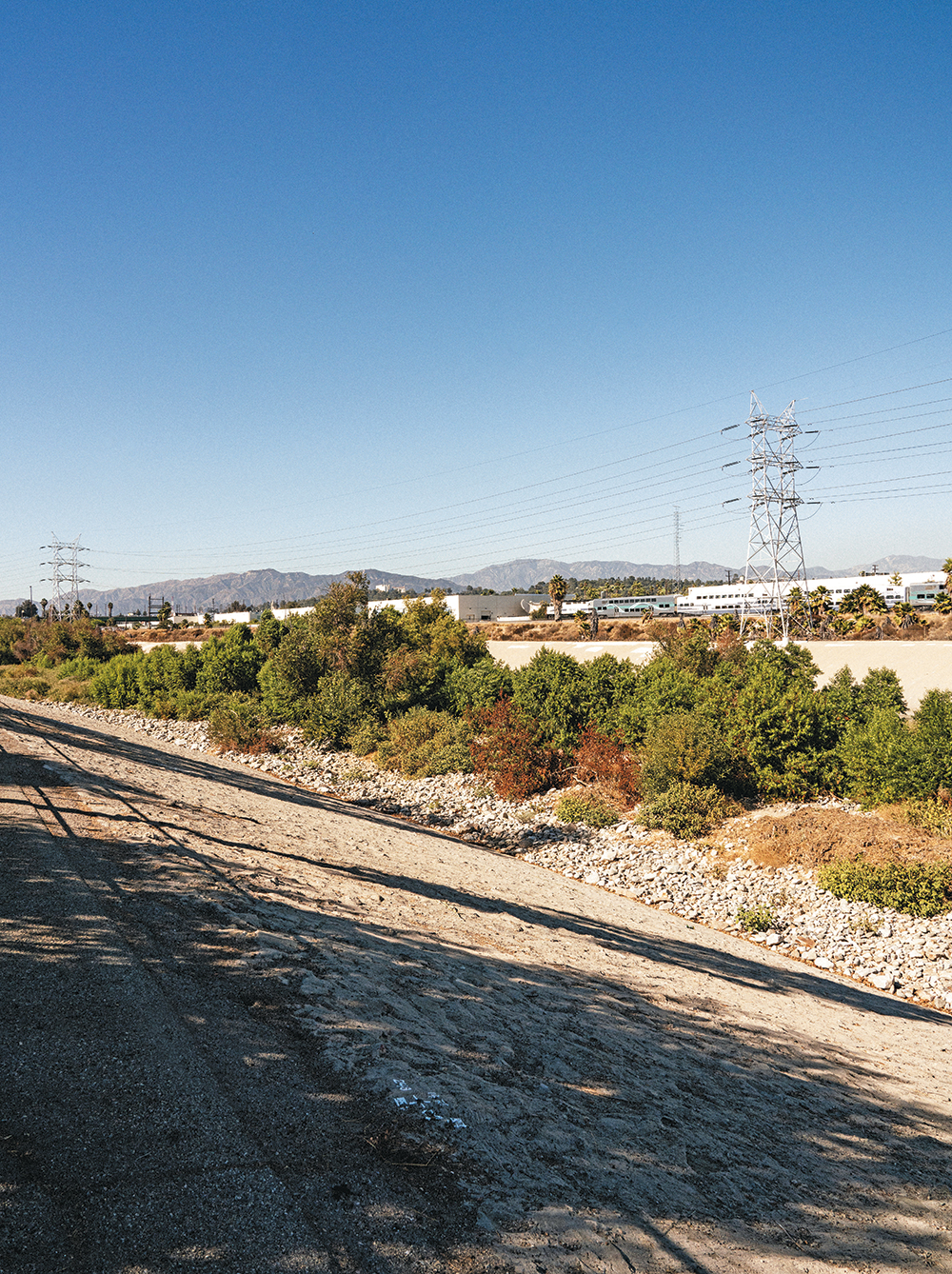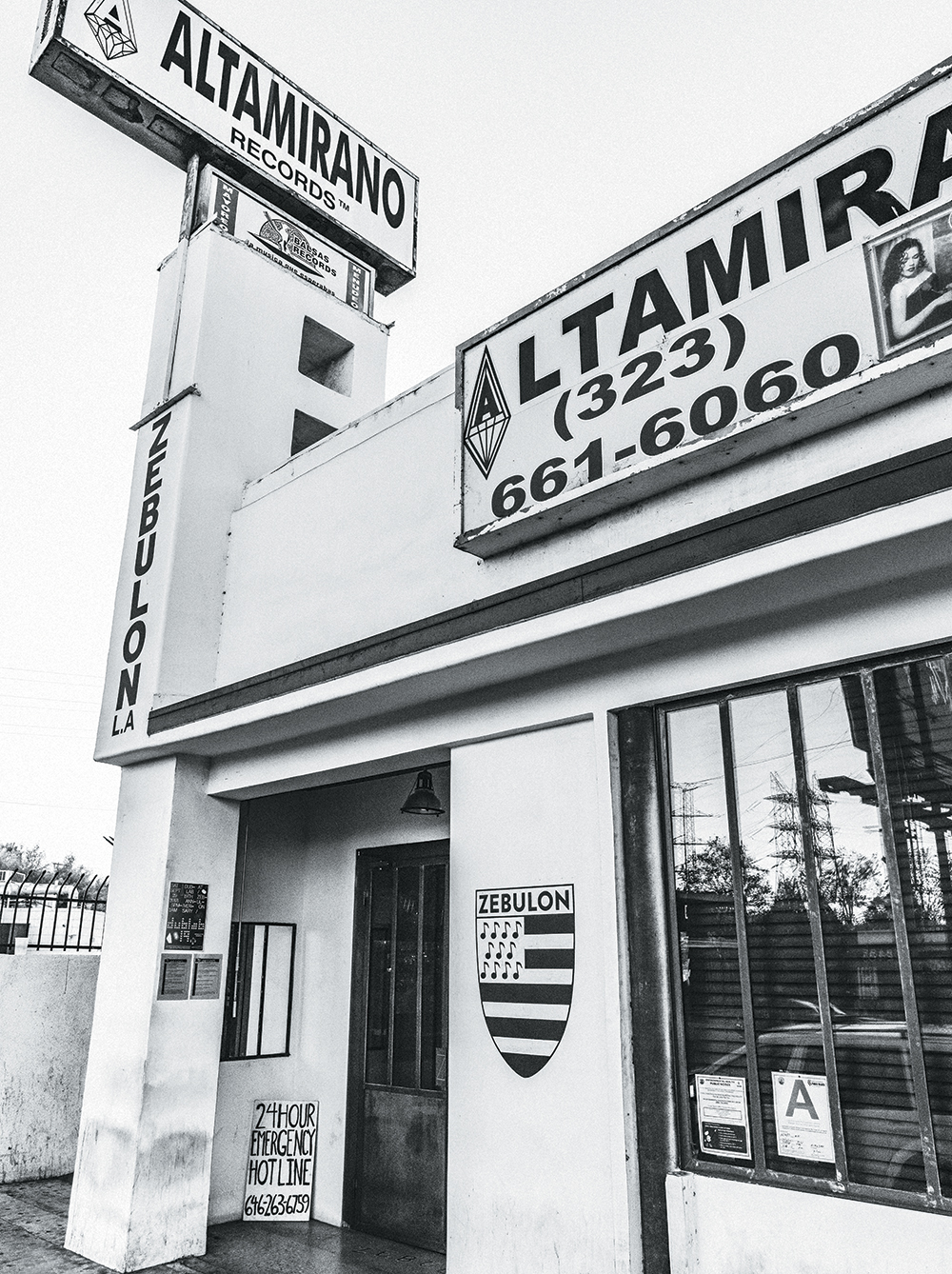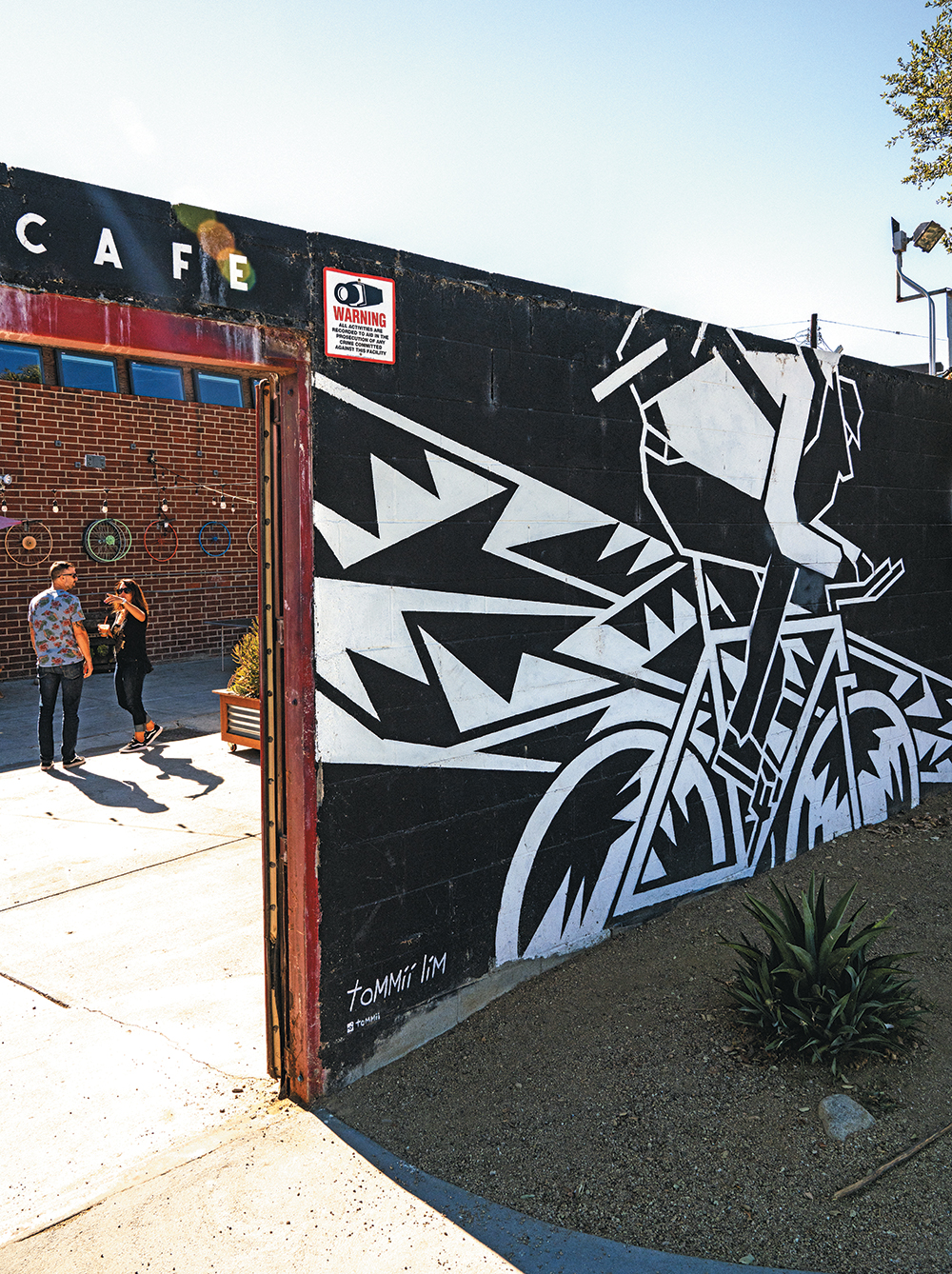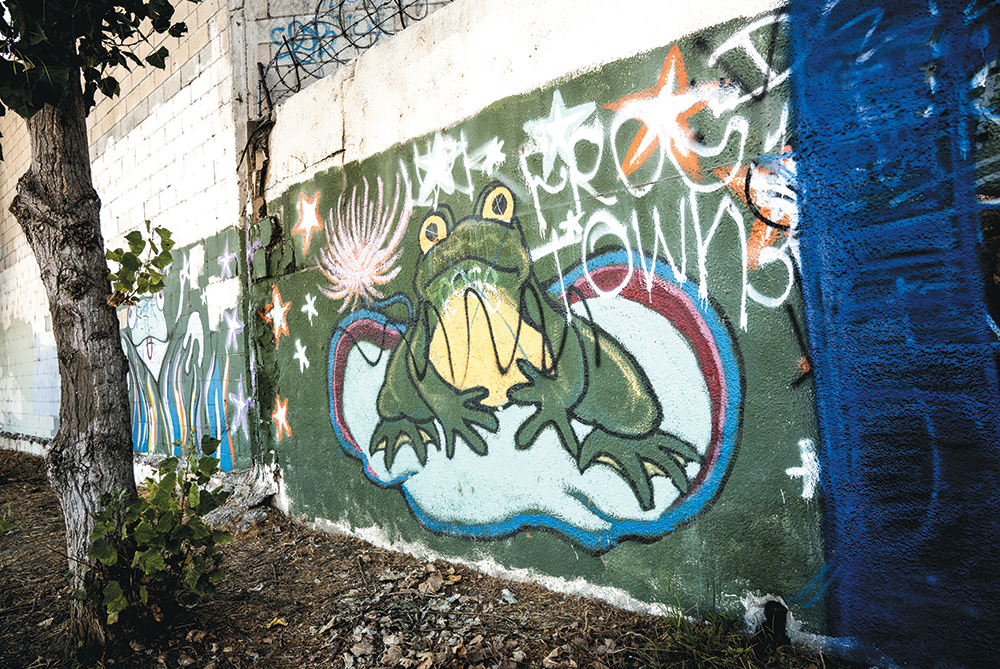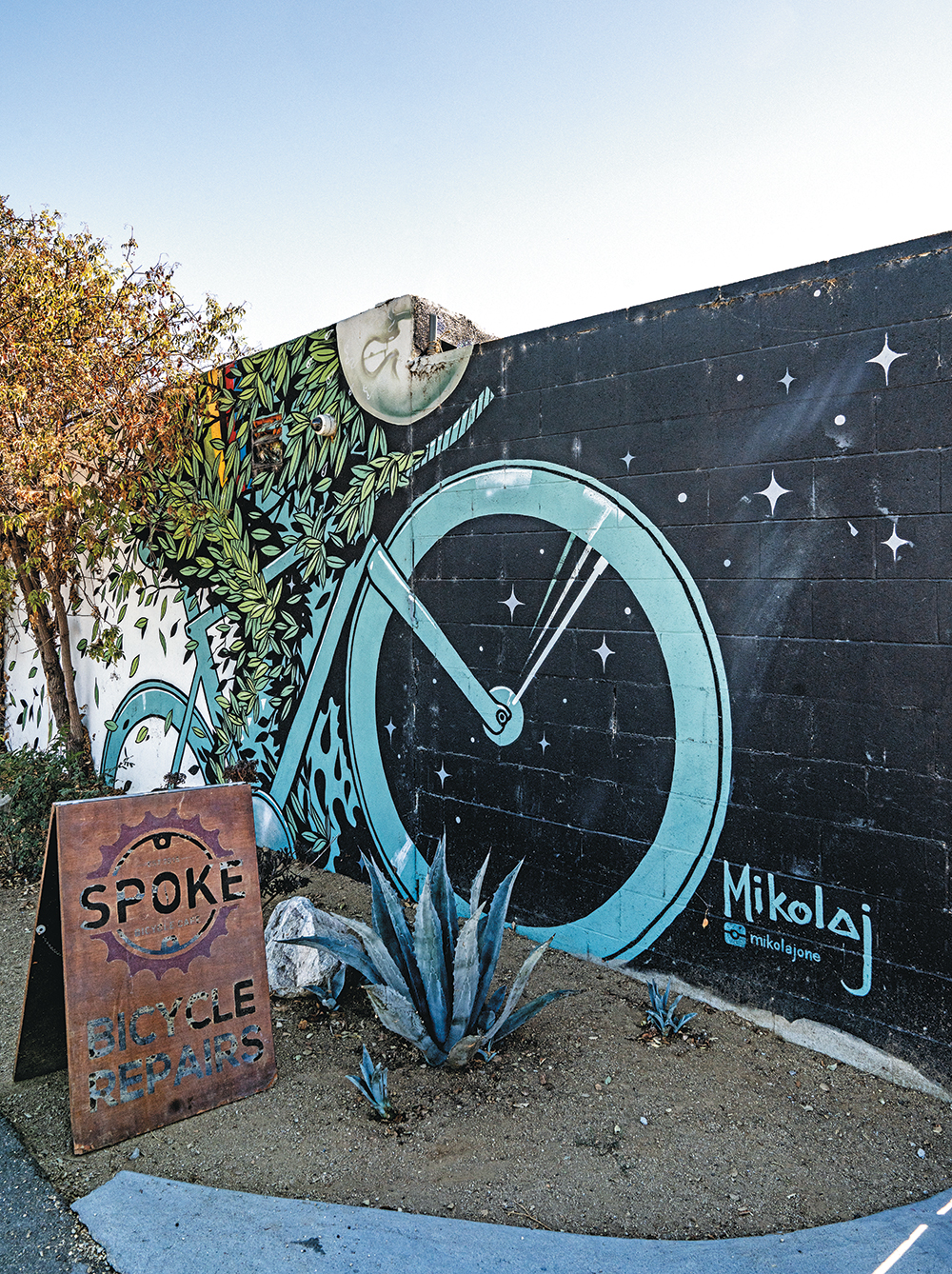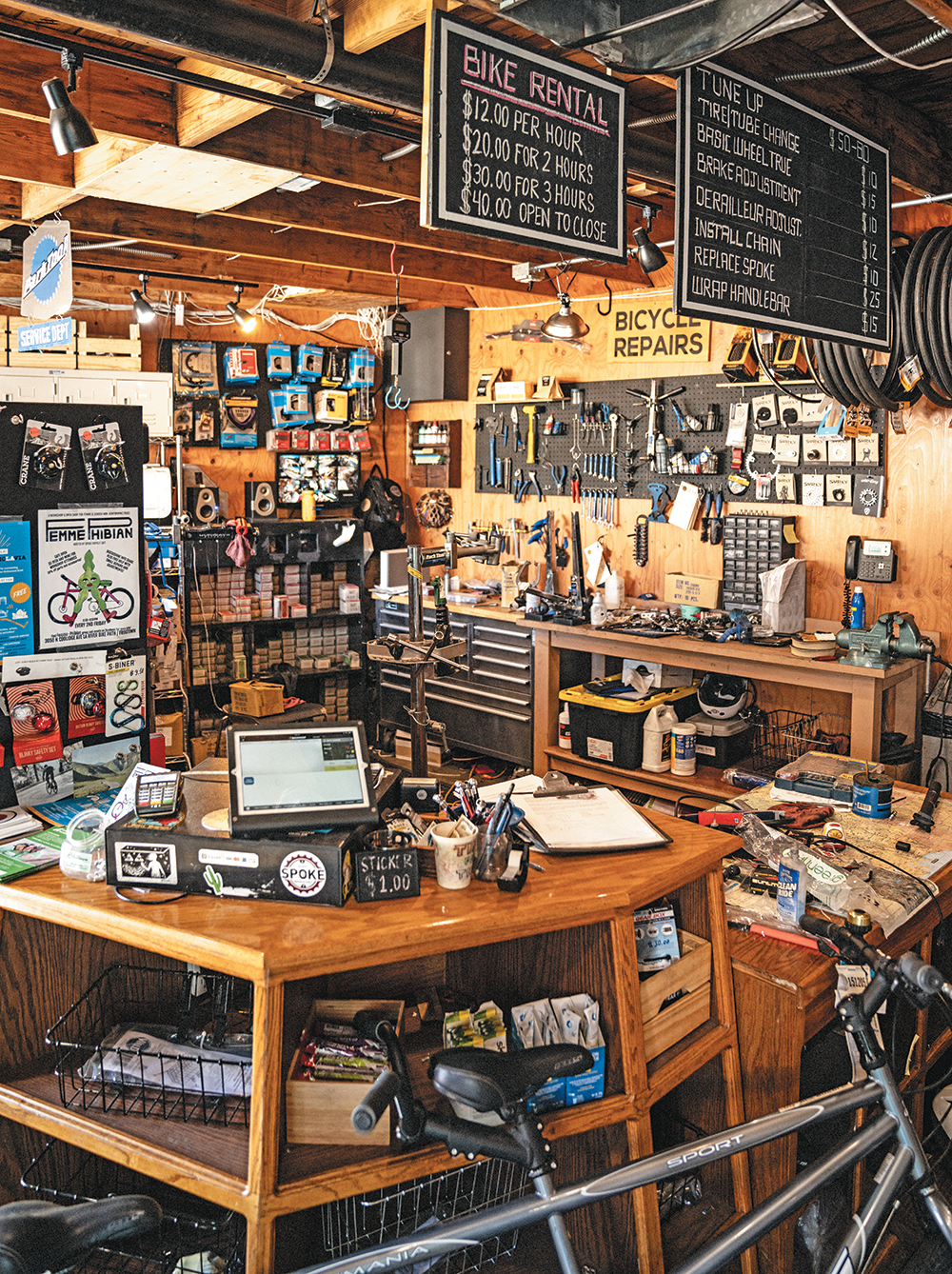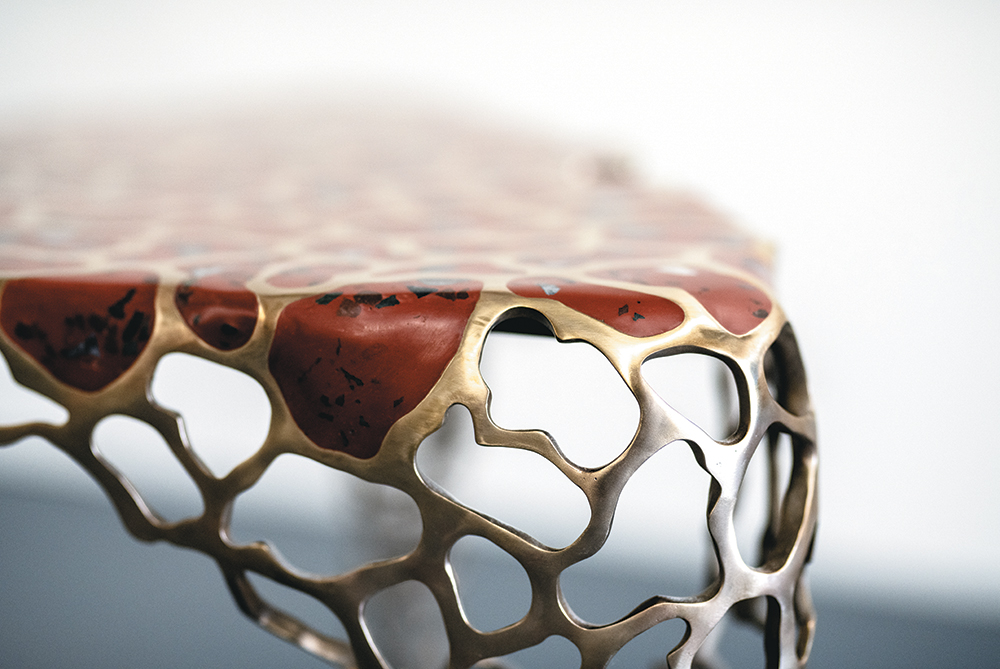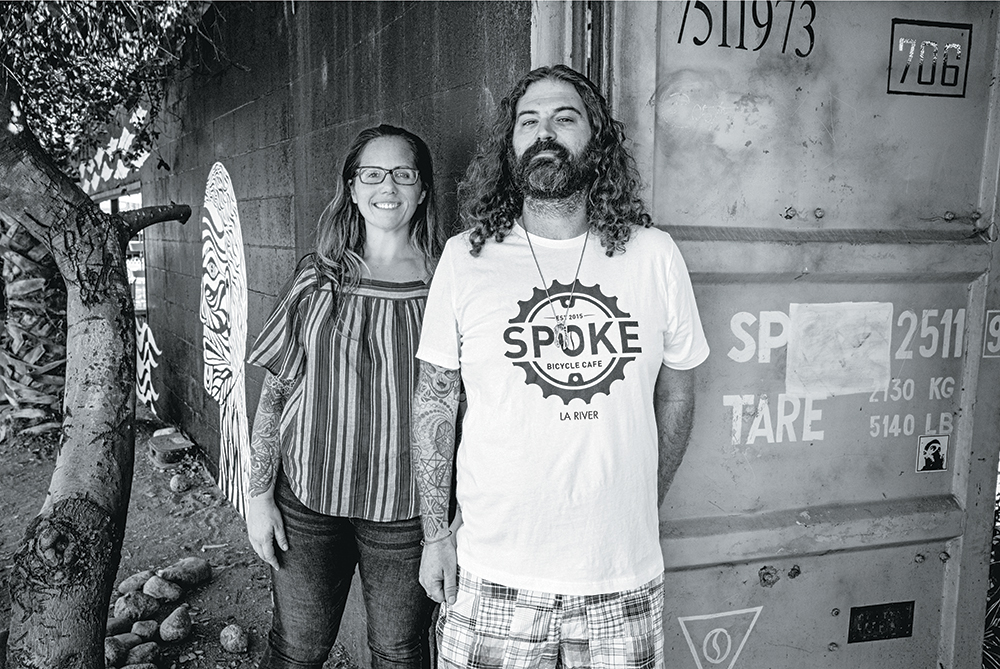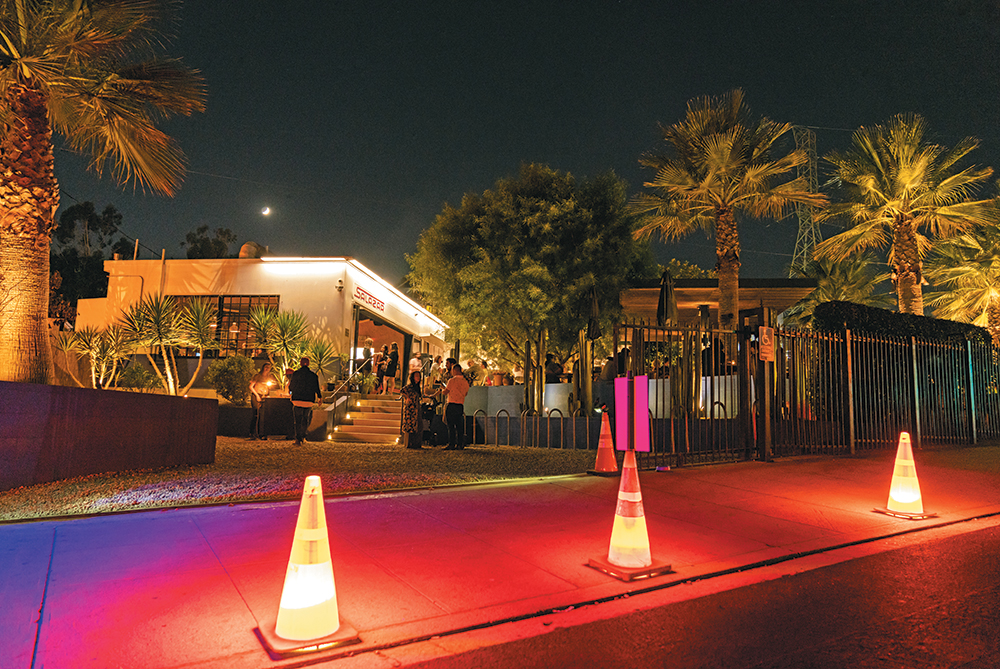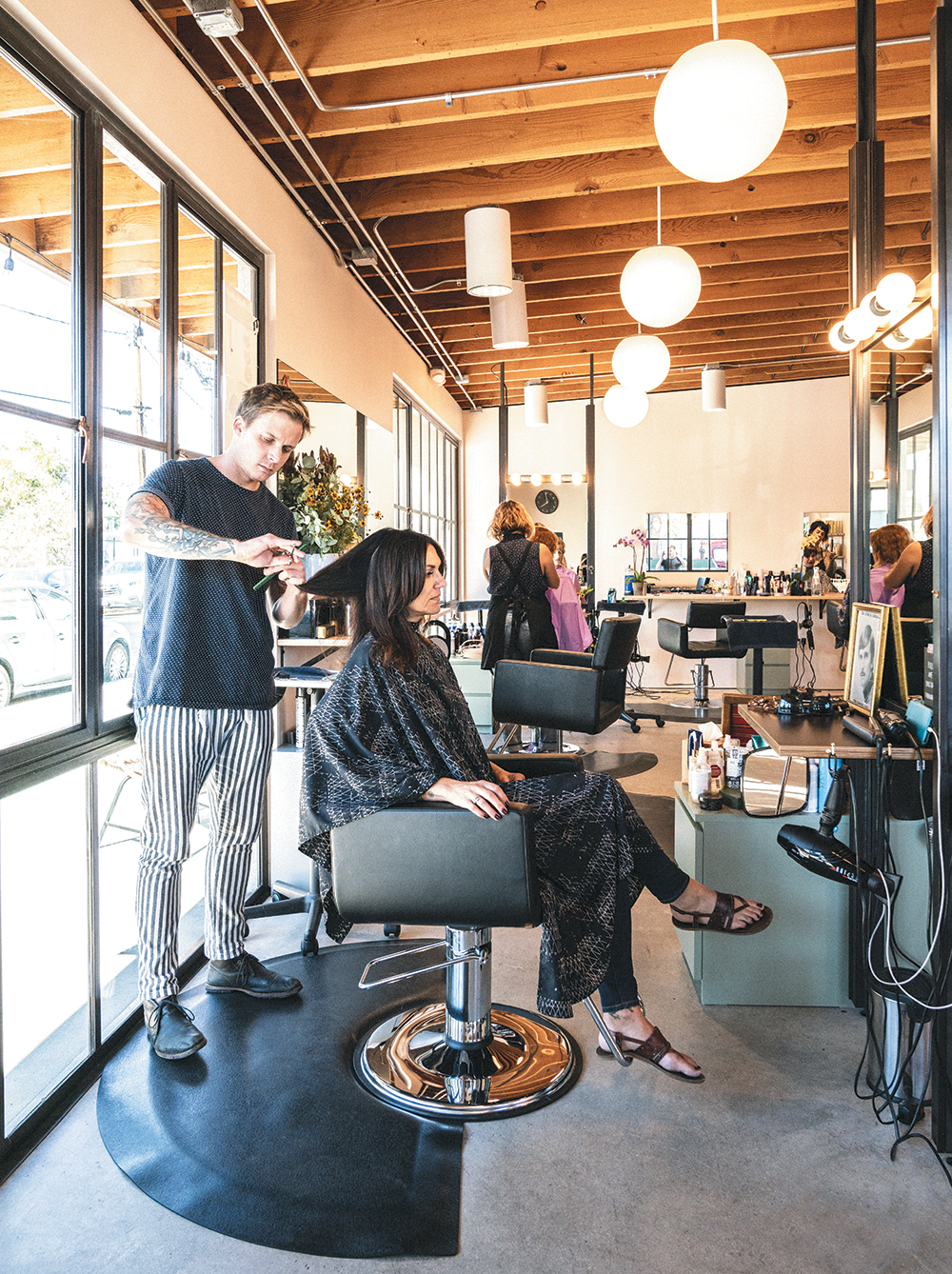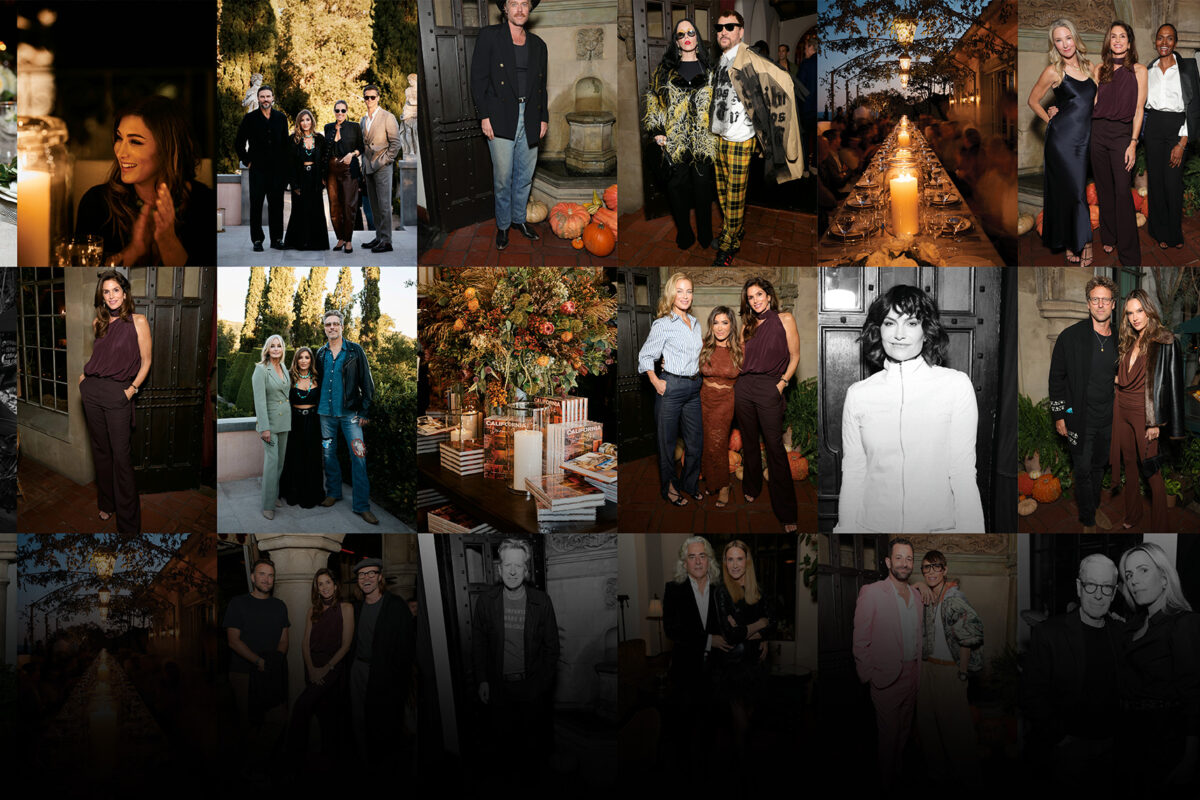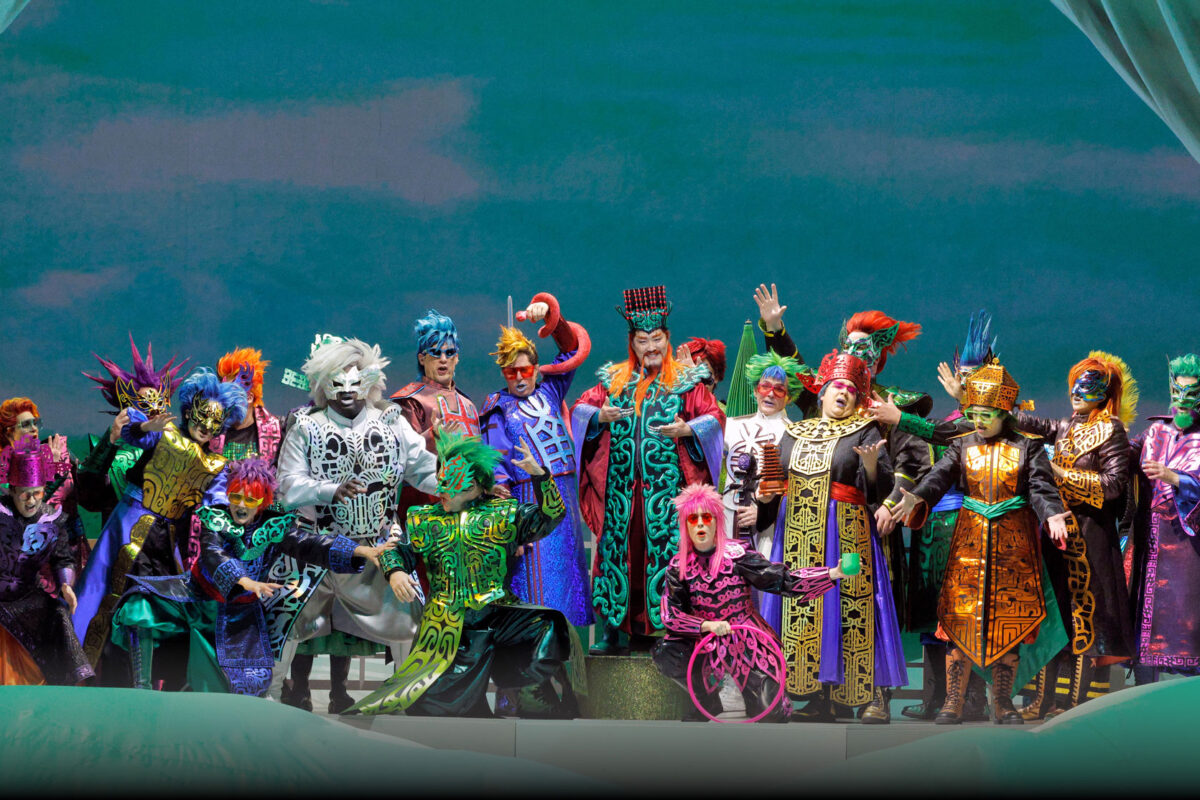A forgotten backwater on the L.A. River transforms itself into an creative hub
Words by HADLEY MEARES
Photography by RAINER HOSCH
Heading south on the 5 freeway, you could easily miss the clutch of low-rise industrial buildings and 1930s bungalows on the Los Angeles River, sandwiched between Silver Lake and Glassell Park, collectively known as Frogtown. Look a little closer and you’ll find a hip oasis where collectible artists and creative innovators live and work in what is becoming the east side’s newest most desirable neighborhood.
“There is this creative energy buzzing around the place, like what’s going to happen next?” says Richard Latronica, co-owner of Spoke Bicycle Cafe, one of Frogtown’s main social hubs. “That is enticing to artists, forward thinkers, and people trying to be part of something new.” You’ve probably heard Frogtown dropped into conversation sometime in the last few years. The street artist-turned-establishment favorite Shepard Fairey, made famous by his iconic Hope poster featuring then-presidential candidate Barack Obama, has his studio here; Brad Pitt has paid frequent visits to his friend (and some say de facto art teacher) the sculptor Thomas Houseago, who lives and works in the area; two years ago in the neighborhood, Esdras Ochoa, the chef whom the Los Angeles Times calls “The Taco Missionary,” opened Salazar (now helmed by chef Jonathan Aviles), a restaurant so hot it still hasn’t bothered to get a phone line installed.
“Because Frogtown is hemmed in on both sides, it lends itself to being its own creative cloister,” says Compass real estate agent Johnny Johnston, who has sold homes in the city’s most desirable areas, from Silver Lake to Mulholland Drive. “It gets to exist in a part of town that places high value and appreciation on art—while still being able to be its own distinct voice. It is an island in the middle of the city.” No wonder it has attracted burgeoning brands, such as the accessories company Clare V., to set up their headquarters there.
But all the hype is underpinned by a curious culture within. The residents of Frogtown have a work ethic aligned with the millennial mantra of “work less, work better.” Life is slower here than in the nearby arts and fashion districts of Downtown L.A., and a million miles from the hustle and bustle of the congested metropolis that surrounds it. Some residents even liken it to L.A.’s answer to Mayberry, the fabled, near-perfect town in The Andy Griffith Show—albeit a scruffier, more down-at-the-heels version.
“Frogtown attracts interesting people who aren’t afraid to take risks”
“They say that less stress can lead to greater creativity,” says Jesse Peterson, a clean-cut musician with a winning smile. In 2017, Peterson and his wife, singer-songwriter and visual artist Mia Doi Todd, co-opened the restaurant-cum-musical venue Zebulon in partnership with brothers Jef and Joce Soubiran, who owned the previous incarnation of the hot spot in Brooklyn. With its hangarlike interior, Zebulon fits right in with the neighborhood. It has welcomed musicians as diverse as punk sax player James Chance, jazz legend Roscoe Mitchell and psychedelic folk singer Linda Perhacs.
“Frogtown attracts interesting people who aren’t afraid to take risks,” says Latronica, who with his partner, Laurie Winston, opened Spoke Bicycle Cafe in spring 2015, which is now one of the cultural centers of the neighborhood, servicing everyone from freelancers on laptops to neighborhood families to Lycra-clad cyclists in need of a repair job. Latronica and Winston live up the river in Atwater Village, where they moved eight years ago from the Midwest and New England, respectively.
Situated along the Los Angeles River, Spoke is a brightly painted, partly open-air space that serves some of the best coffee in the area. It also hosts multiple events every week, including live music, movie screenings, trivia nights, comedy shows and even tie-dye workshops. “People approach us with ideas for events they want to have all the time—we are a very community-oriented business,” says Winston.
Witnessing this evolution with delight is artist Michael Todd, Mia’s father, an octogenarian with a youthful spirit who moved his studio and family to an old flooring factory on the river over 30 years ago. “As the factories closed, the creators arrived, transforming formally industrial spaces…because they need the space,” Michael explains. “So, I was the first.”
Over the years, Michael has been joined by many prominent artists and architects, including multi-media artist Tanya Aguiñiga, designer and architect Eddy Sykes, and his wife, landscape architect and professor Astrid Sykes. Also, small businesses, such as the Lucas hair salon run by Lisa Mayer, to which customers will travel the breadth of the city to get to, have made Frogtown home base.
This influx of creators has led to significant price increases for studios. “If you want a warehouse space in Frogtown, you’re going to pay $5 million,” Johnston says. “The days of ‘cheap’ real estate in Frogtown, in that iteration, [have] passed.”
“Prices have appreciated pretty quickly,” says commercial real estate broker Carle Pierose of Industry Partners. “Some of the better Frogtown properties have exceeded $400 and even $500 per improved square foot when sold vacant to owner/users. Rents have also increased substantially. Both reflect healthy interest, but what I love most is it’s generally really cool companies and people driving that.”
Since 2006, the neighborhood has celebrated a biennial Frogtown Artwalk, which spotlights its established and up-and-coming artists.Frogtown’s artistic explosion mimics that of Los Angeles as a whole, whose prominence on the global art map continues to grow with the arrival of the Frieze Los Angeles contemporary art fair at Paramount Pictures Studios in February 2019.
One of the largest artistic centers in this enclave will be the Wiseman Studio, a 30,000-square-foot former factory complex turned artist’s studio and gallery set to open in early 2019. The multiuse compound is a collaboration between designer and mediagenic artist David Wiseman, known for his large-scale sculptural objects and ornate, nature-inspired installations, and his brother, Ari, former deputy director of the Solomon R. Guggenheim Museum and Foundation. The industrial property is being sleekly transformed by Ted Trussell Porter of New York-based Ted Porter Architecture.
“It seems like all the puzzle pieces are set to create this really dynamic community,” says Wiseman. “You don’t see evidence of a huge metropolitan city. You see hills and this large undeveloped tract of
land on the other side of the river. It’s just acres and acres of fields and, of course, the river itself. It’s this great combination of industry, nature and just mellow neighborhood.”
The L.A. River, and the paved path that follows it, is cited again and again by residents as one of the neighborhood’s biggest draws, highlighting the way gentrification often starts with the cleaning up of public spaces—as was the case with the Venice Canals and the warehouses of the Arts District.
“The revitalization of the L.A. River has been the driving force that has transformed Frogtown,” Johnston confirms. “A tract of homes and warehouses that was once forgotten has been brought to the fore as the river has changed and the surrounding neighborhoods have gotten more expensive.”
“The revitalization of the L.A. River has been the driving force that has transformed Frogtown”
The river and nature that surrounds Frogtown has also attracted the interest of young environmentalists. Ten-year resident Arlan Jason Wood and his wife, Emily Gleicher, are the founders of Farm LA, a nonprofit organization dedicated to rescuing underutilized land in Los Angeles for urban farming. They began in Frogtown over three years ago and have helped transform a quarter-acre of sidewalks into community vegetable gardens.
“We implemented almost a dozen sidewalk minifarms with our volunteers,” Gleicher says. “The water to keep them growing was donated by the home or business in front.”
“One 73-year resident of Frogtown was so pleased with what we’re doing that he donated his vacant plot in Frogtown to Farm LA,” adds Gleicher. “So, we now have our first full-size urban farm where we grow lima beans and donate them to organizations working with lower-income communities and families.” Lima beans also appear along the sidewalks and are the perfect crop, according to Gleicher, as they have protective shells and they grow on vines around willow frames—so they are out of reach from wayward feet and pets.
Part and parcel with a neighborhood’s gentrification is the reality that longtime residents who can no longer afford the rents are eventually pushed out. “Five years ago, you could get a bungalow for around $400,000, and now you’ll be paying $800,000 to $900,000,” Johnston says. “Last year, a meditation center came on the market for $600,000—and every young artist who had visions of opening a commune pounced on it. It had 50 offers and sold for over $900,000.”
For now, the sense of community is strong and a main selling point. “People bring us cookies during the holidays, send us postcards on vacations, pass down baby clothes,” says Jacqueline Goodman, the ebullient blonde owner of The Left Bank, a charming vintage and resale boutique that opened six years ago in Goodman’s grandfather’s old tool shop. “My favorite thing about Frogtown is probably our postal gal, Carmen, who has become a friend of mine. She works so hard in polyester in 100-degree L.A. summers. She’s the best. She’s what Frogtown is.”
Real estate agent Johnston agrees. “It’s a perfect snapshot of a moment in L.A.’s history. A time when work and life were side by side—and you would walk to the factory where you worked,” he says. “Maybe the rebirth of Frogtown will bring that back in a city defined by its commute.”
Whether it’s a blueprint for the future or just a pipedream for the privileged few, the Frogtown model isn’t going to solve the housing crisis. But as L.A.’s population grows eastward, it’s good to know there’s another desirable, under-the-radar option. Of course, it’s unlikely to stay that way for long.
This story originally appeared in the Fall 2018 issue of C For Men.






